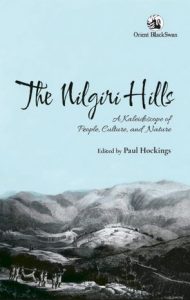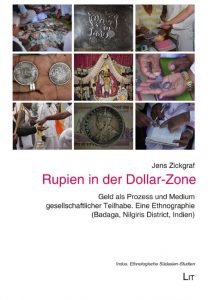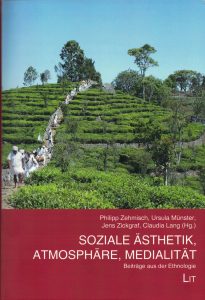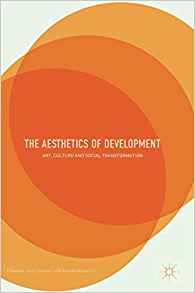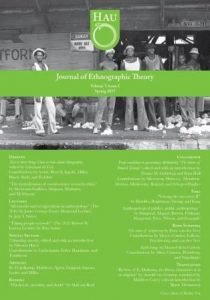Publications (Jens M. Zickgraf)
The Nilgiris are a unique place, and much has been reported and is to be admired about their crafts, culture, exchanges, and relationships, both past and present. Yet even though it provides an omnipresent connection between all of these realms, relatively little is known about money and monetary culture in the hills. Here I take the cultivation of the ‘money bush,’ as the tea plant was called for some time during the twentieth century, as a starting point to address a number of socioeconomic transformations among local Badagas, along with the ambivalent meanings of money in local accounts of life, history, community, worth and relationships.
The Ambivalence of Money
According to the Marxian paradox, money is fundamentally a social relationship. Yet in its grown capacity to measure and represent abstract value, money simultaneously acts as a veil for such relations. As Georg Simmel (2005 [1900]) explained this, the mediation of money renders close what was originally distant, and it does so at the price of rendering distant what was originally close. In light of such ‘veiling’ and ‘distancing,’ scholars have thus often lamented–quite one-sidedly, indeed–the socially disruptive process of ‘monetization.’ However, such perceptions were predominantly born in ideological symbiosis with Western individualism and the model-version (Callon 1998) of a self-regulating, anonymous and continuously expanding market economy. What more recent theories emphasize is that money itself continues to be made and remade, in the course of history (Hart 2001; Graeber 2011); whenever it is in the possession or reach of concrete people (Zelizer 1994; Zickgraf 2017); and wherever it manifests within the boundaries of concrete places and along the trajectories of concrete monetary circuits (Guyer 2004). Money–how it is valued and how it is perceived as both process and medium in society–thus rests far more uneasily between distance and closeness, exchange and identity, calculation and experience. In this article I will exemplify this with regard to the Badagas, the Bought-Leaf (BLF) tea industry which became their collective economic base during the second half of the twentieth century, and the consequent socioeconomic transformations …
Als Prozess und Medium gesellschaftlicher Teilhabe ist Geld vielerorts mit Wandel, Macht und Transformation verbunden. Der Gebrauch und die Zirkulation von Geld spiegeln indes auch tiefgreifende Aspekte von Tradition und fortlaufende Prozesse gesellschaftlicher Reproduktion wider. Der Band beschreibt Geschichte, Gegenwart und Kultur des Geldes in den südindischen Nilgiri mit Blick auf die dort lebenden Badaga. Ursprungsmythen, Dorfgründungen und Ahnenkulte, Kolonisation, ethnographische Repräsentation und Globalisierung, Markt, Gemeinschaft und Identität, Liebe, Religion und Ökonomie, Sozialstruktur und finanzielle Landschaften werden zur Geschichte und Gegenwart eines “lokalen Geldes” verknüpft – ein Geld der Tat, des Geistes und der Erinnerung.
Der Band ehrt die Forschung und Lehre des Ethnologen Frank Heidemann mit Aufsätzen in deutscher und englischer Sprache. Die Beiträge seiner SchülerInnen, FreundInnen und WegbegleiterInnen repräsentieren sowohl Frank Heidemanns regionalen Schwerpunkt in Südasien als auch sein breites Forschungsinteresse an Politik- und Medienethnologie, Poststrukturalismus, Postkolonialen Studien, ethnographischem Film und an der Anthropologie der Sinne. Die Essays zur sozialen Ästhetik und Atmosphäre vereinen internationale Expertise zu einem hochaktuellen Forschungsfeld, das von Frank Heidemann in der deutschen Ethnologie vertreten wird.
Money has been treated as both the epitome of modernity and the universal scapegoat for capitalist transformations. “Abstract”, “modern” and “impersonal” money, it was perhaps largely claimed by those who were in a privileged position of control and possession, could not but alienate society, render all values impersonal and comparable, and thus undermine the integrity of all culture and identity. By contrast, this essay suggests that we conceive of money not as an alienable thing in the first place but as a perceptible and creative process, situated in time and space, and grounded in human agencies, values and manipulations. Ethnography is used to illustrate how we may focus far more specifically, on the memories, transformations, deeds and social aesthetics through which money is valued, transacted, experienced and brought into being – historically, spatially as well as in contemporary social, cultural and material life.
In this article I take the scene of a group of South Indian villagers perceiving and counting a heap of collective money as a starting point to look at qualitative, subjective, and contextual variations through which money manifests itself as valued properties, circuits, performances, acts, repertoires, and capacities in social and personal life. As I argue, this requires us to scrutinize the shifting proximities between money objects and money subjects. I trace these through the notion of “moneyness,” and more precisely through the relational property of being (or getting) “in,” “at,” and “out” of what money is, becomes, and represents.
Publications (Jens M. Zickgraf)
The Nilgiris are a unique place, and much has been reported and is to be admired about their crafts, culture, exchanges, and relationships, both past and present. Yet even though it provides an omnipresent connection between all of these realms, relatively little is known about money and monetary culture in the hills. Here I take the cultivation of the ‘money bush,’ as the tea plant was called for some time during the twentieth century, as a starting point to address a number of socioeconomic transformations among local Badagas, along with the ambivalent meanings of money in local accounts of life, history, community, worth and relationships.
The Ambivalence of Money
According to the Marxian paradox, money is fundamentally a social relationship. Yet in its grown capacity to measure and represent abstract value, money simultaneously acts as a veil for such relations. As Georg Simmel (2005 [1900]) explained this, the mediation of money renders close what was originally distant, and it does so at the price of rendering distant what was originally close. In light of such ‘veiling’ and ‘distancing,’ scholars have thus often lamented–quite one-sidedly, indeed–the socially disruptive process of ‘monetization.’ However, such perceptions were predominantly born in ideological symbiosis with Western individualism and the model-version (Callon 1998) of a self-regulating, anonymous and continuously expanding market economy. What more recent theories emphasize is that money itself continues to be made and remade, in the course of history (Hart 2001; Graeber 2011); whenever it is in the possession or reach of concrete people (Zelizer 1994; Zickgraf 2017); and wherever it manifests within the boundaries of concrete places and along the trajectories of concrete monetary circuits (Guyer 2004). Money–how it is valued and how it is perceived as both process and medium in society–thus rests far more uneasily between distance and closeness, exchange and identity, calculation and experience. In this article I will exemplify this with regard to the Badagas, the Bought-Leaf (BLF) tea industry which became their collective economic base during the second half of the twentieth century, and the consequent socioeconomic transformations (…)
Als Prozess und Medium gesellschaftlicher Teilhabe ist Geld vielerorts mit Wandel, Macht und Transformation verbunden. Der Gebrauch und die Zirkulation von Geld spiegeln indes auch tiefgreifende Aspekte von Tradition und fortlaufende Prozesse gesellschaftlicher Reproduktion wider. Der Band beschreibt Geschichte, Gegenwart und Kultur des Geldes in den südindischen Nilgiri mit Blick auf die dort lebenden Badaga. Ursprungsmythen, Dorfgründungen und Ahnenkulte, Kolonisation, ethnographische Repräsentation und Globalisierung, Markt, Gemeinschaft und Identität, Liebe, Religion und Ökonomie, Sozialstruktur und finanzielle Landschaften werden zur Geschichte und Gegenwart eines “lokalen Geldes” verknüpft – ein Geld der Tat, des Geistes und der Erinnerung.
Der Band ehrt die Forschung und Lehre des Ethnologen Frank Heidemann mit Aufsätzen in deutscher und englischer Sprache. Die Beiträge seiner SchülerInnen, FreundInnen und WegbegleiterInnen repräsentieren sowohl Frank Heidemanns regionalen Schwerpunkt in Südasien als auch sein breites Forschungsinteresse an Politik- und Medienethnologie, Poststrukturalismus, Postkolonialen Studien, ethnographischem Film und an der Anthropologie der Sinne. Die Essays zur sozialen Ästhetik und Atmosphäre vereinen internationale Expertise zu einem hochaktuellen Forschungsfeld, das von Frank Heidemann in der deutschen Ethnologie vertreten wird.
2017, “Capitalist Transformations and the Social Aesthetics of Money: Money, Mountains and ‘1000 Houses’.” In: John Clammer and Ananta K. Giri (eds.). The Aesthetics of Development: Art, Culture and Social Transformation. New York: Palgrave Macmillan.
Money has been treated as both the epitome of modernity and the universal scapegoat for capitalist transformations. “Abstract”, “modern” and “impersonal” money, it was perhaps largely claimed by those who were in a privileged position of control and possession, could not but alienate society, render all values impersonal and comparable, and thus undermine the integrity of all culture and identity. By contrast, this essay suggests that we conceive of money not as an alienable thing in the first place but as a perceptible and creative process, situated in time and space, and grounded in human agencies, values and manipulations. Ethnography is used to illustrate how we may focus far more specifically, on the memories, transformations, deeds and social aesthetics through which money is valued, transacted, experienced and brought into being – historically, spatially as well as in contemporary social, cultural and material life.
In this article I take the scene of a group of South Indian villagers perceiving and counting a heap of collective money as a starting point to look at qualitative, subjective, and contextual variations through which money manifests itself as valued properties, circuits, performances, acts, repertoires, and capacities in social and personal life. As I argue, this requires us to scrutinize the shifting proximities between money objects and money subjects. I trace these through the notion of “moneyness,” and more precisely through the relational property of being (or getting) “in,” “at,” and “out” of what money is, becomes, and represents.

